We meet Chris Barnes and Paul Webb, the urban beekeepers behind their namesake Barnes & Webb, in the garden of the Geffrye Museum. It is an imposing 18th century East London almshouse made of sepia-colored brick, surrounded by smooth lawns, soaring trees and rose bushes. Today, an icy snap is making the leaves quiver. On the other side of the narrow garden sits Haggerston station, a Victorian railway that recently cranked back into action after years of disuse.
This is not the most obvious place one might expect to find a hive of honeybees, their low hum audible between the trains as they thunder across the tracks, coughing out and scooping up Londoners.


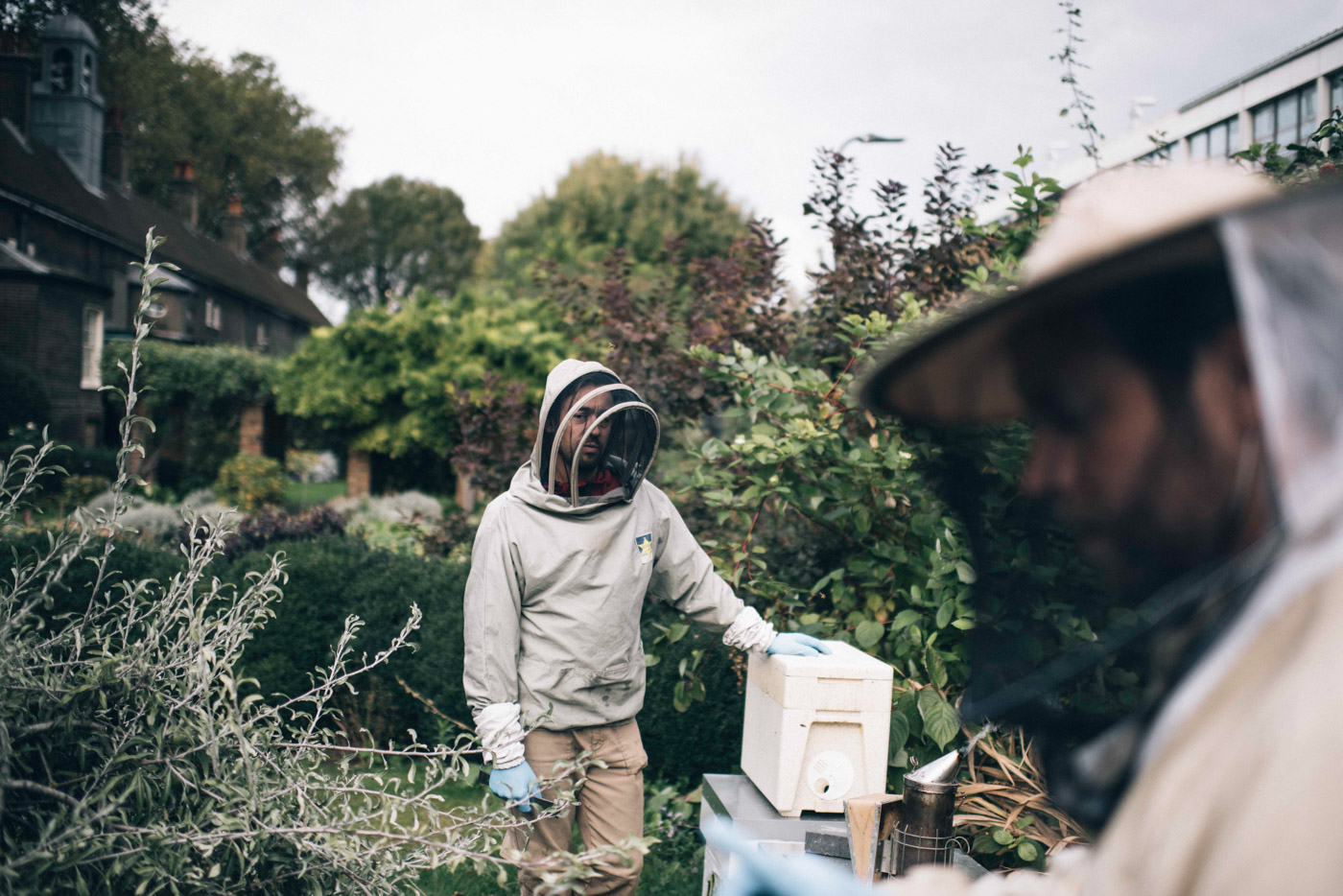
These gardens lie in the chaotic district of Hackney, where council towers, jazz bars and bike shops are tucked beside Tudor houses and creaky old pubs. Even in the deepest hours of night, Hackney crawls with activity. These gardens offer a little respite from the madness. Today, a few people mill about, sniffing flowers and ambling between the rustling trees.
It is here, in the small strip of grass hugging the edge of the museum, that these bees go about their daily lives, gathering pollen from the flowers and sucking up the last of the season’s ivy. The small stack of hives was planted here by Barnes & Webb, a company launched with the hope of bringing London pollinated gardens, local honey and a chance to reconnect with nature. Their hives can now be found in almost every borough, from South London rooftops and East End parks to townhouse gardens and museums. They manage every hive by hand, and harvest what has come to be seen as some of London’s best honey, each batch labelled by its respective postcode: SE10, SW7, N16.
Barnes and Webb met 15 years ago working at a graphic design agency. As a break from the daily grind, they took a fellow colleague on a beekeeping course outside of London. It was there, observing the hives and breathing in the country air, that Barnes and Webb fell in love with this quiet, fading craft. “It just felt to me like the absolutely antithesis of a desk job,” Barnes tells us. “I was so used to sitting in an office churning out nonsense all day. Soon after, I quit my job, broke up with my girlfriend, sold my house, and went travelling indefinitely. I ended up in Malaysia with a friend whose uncle ran a manuka honey farm in the North of New Zealand.” He paints quite the picture of New Zealand, a place that reminded him of his native Wales in the 1970s, unpopulated, safe, with an abundance of space and lush green land. “I got a summer job putting hives in people’s gardens. My mum got ill so I came home to London after that,” Barnes continues. “I told Paul about the hives in New Zealand and said I wanted to try it here. We convinced each other that it was a good idea. We were both looking for something new, something different.” He points up to the glass corridor of the train station, where Webb can be seen pacing down the stairs. He is a little late, joining us from a hive across town in Kensington.
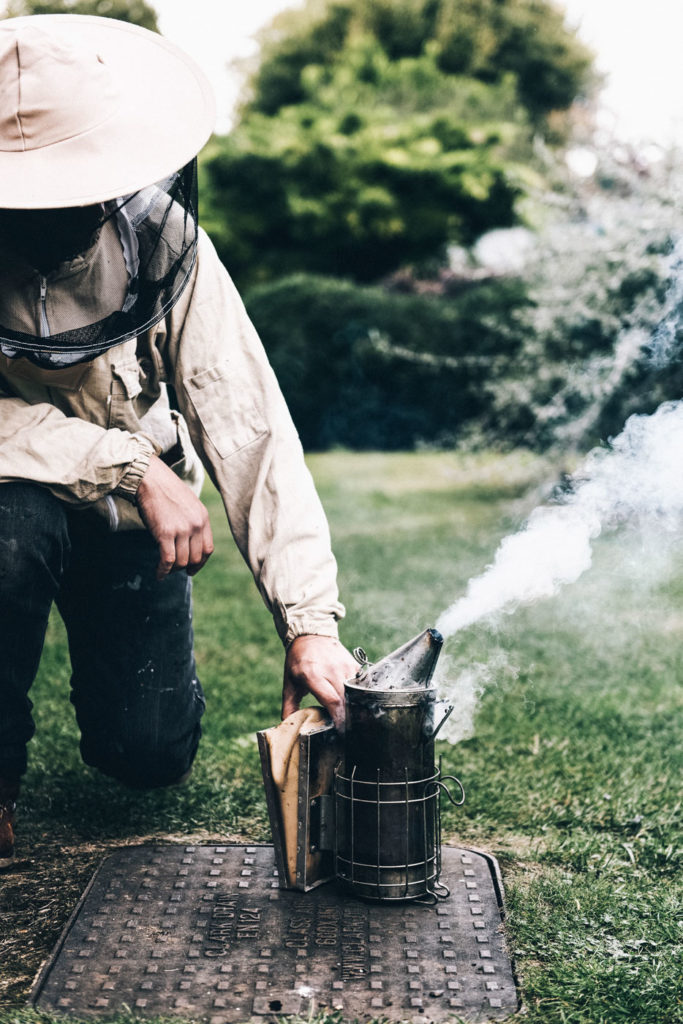
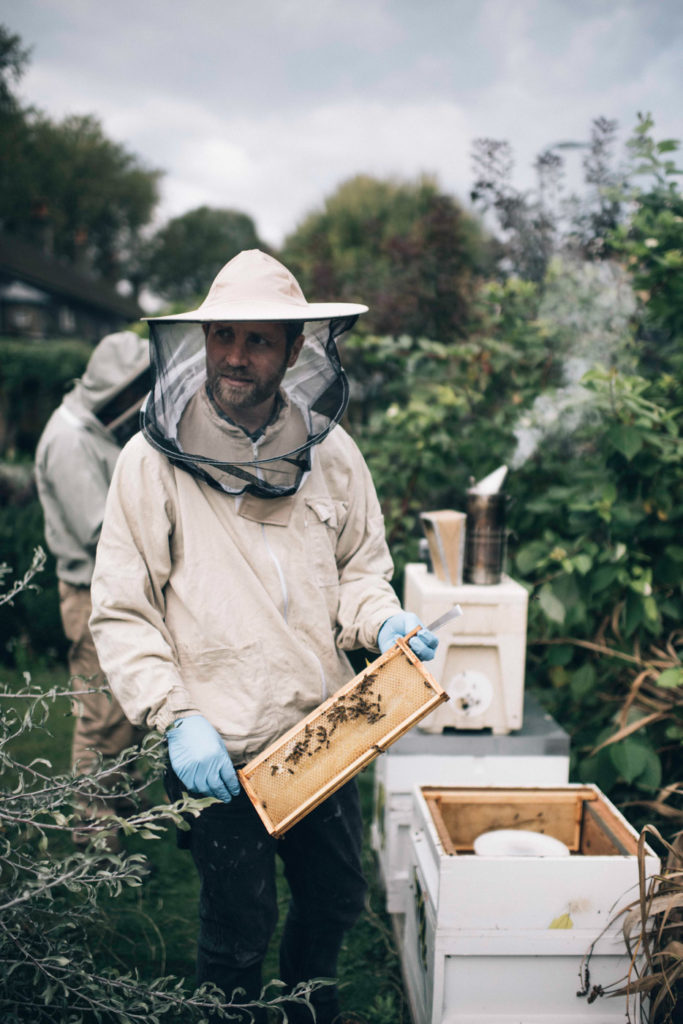
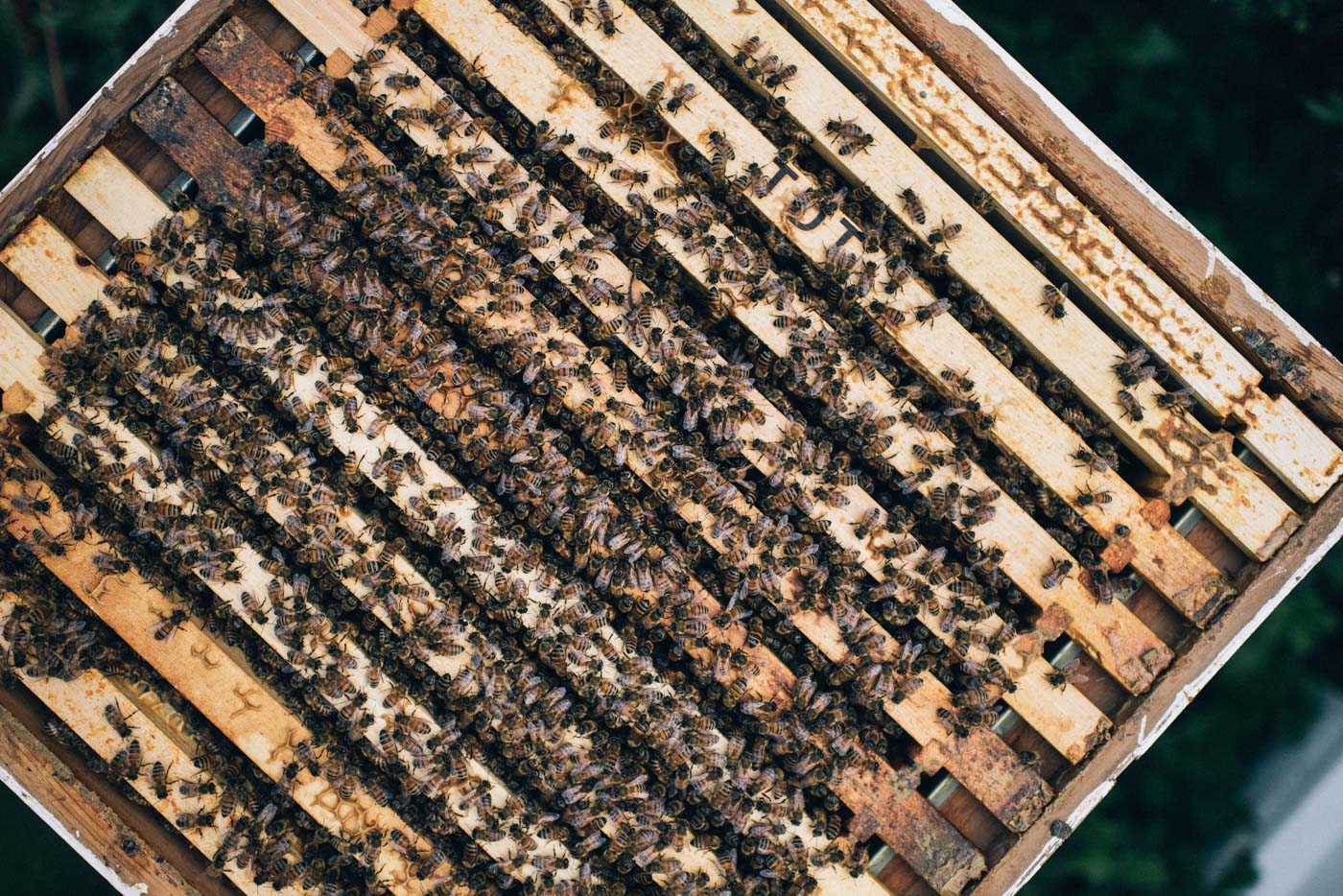
Webb enters into the garden through the brick gateway, and the two begin stepping in to their overalls, slotting two gauzy masks over their heads. This particular colony is, according to Webb, “a gentle bunch,” but he once sustained 40 stings in one sitting. As I watch Barnes and Webb tend to the hives (made up of a brood box, where the queen and babies live, beneath a smaller box where the honey is stored), I am intrigued as to what kind of person is drawn to this strange, gentle craft. “Beekeepers are interesting characters, ” Barnes says, lifting a corner of a box open and letting a few bees swoop out into the cold wind. “Beekeeping is meditative and solitary. Generally, you’re on your own. Just you and nature.” Webb agrees, “It’s certainly not a social industry. The average age of a beekeeper is around 66. It’s a dying craft.” He slides a long, brittle panel of honeycomb from the box and passes it to me. The lines of holes are sharp and deep, their perfect symmetry breathtaking. The pits are covered in a thin sugary coating, a few of them filled with glistening pocks of honey.
Barnes & Webb’s honey has picked up awards, been celebrated in national press and flavored some of the most popular chocolate brands on the market, including cult chocolatiers Mast Brothers. We scoop some up straight from the comb and taste it; it’s saccharine, sticky and slightly granulated, but also floral and delicate. Barnes and Webb harvest honey from their various postcodes once a year, yielding around a hundred jars per hive. Subtle changes in flavour come down to what the bees decide to forage on, and what flowers are in bloom during those precious months. When it comes to extracting the honey, Barnes and Webb do nothing but strain it through a sieve, leaving it almost as it is today, oozing straight from the honeycomb in our hands. “I do always think it is kind of miraculous,” Webb remarks. “They drink flower juice and reduce the water content and turn it into this sweet elixir. It’s absolutely amazing.”
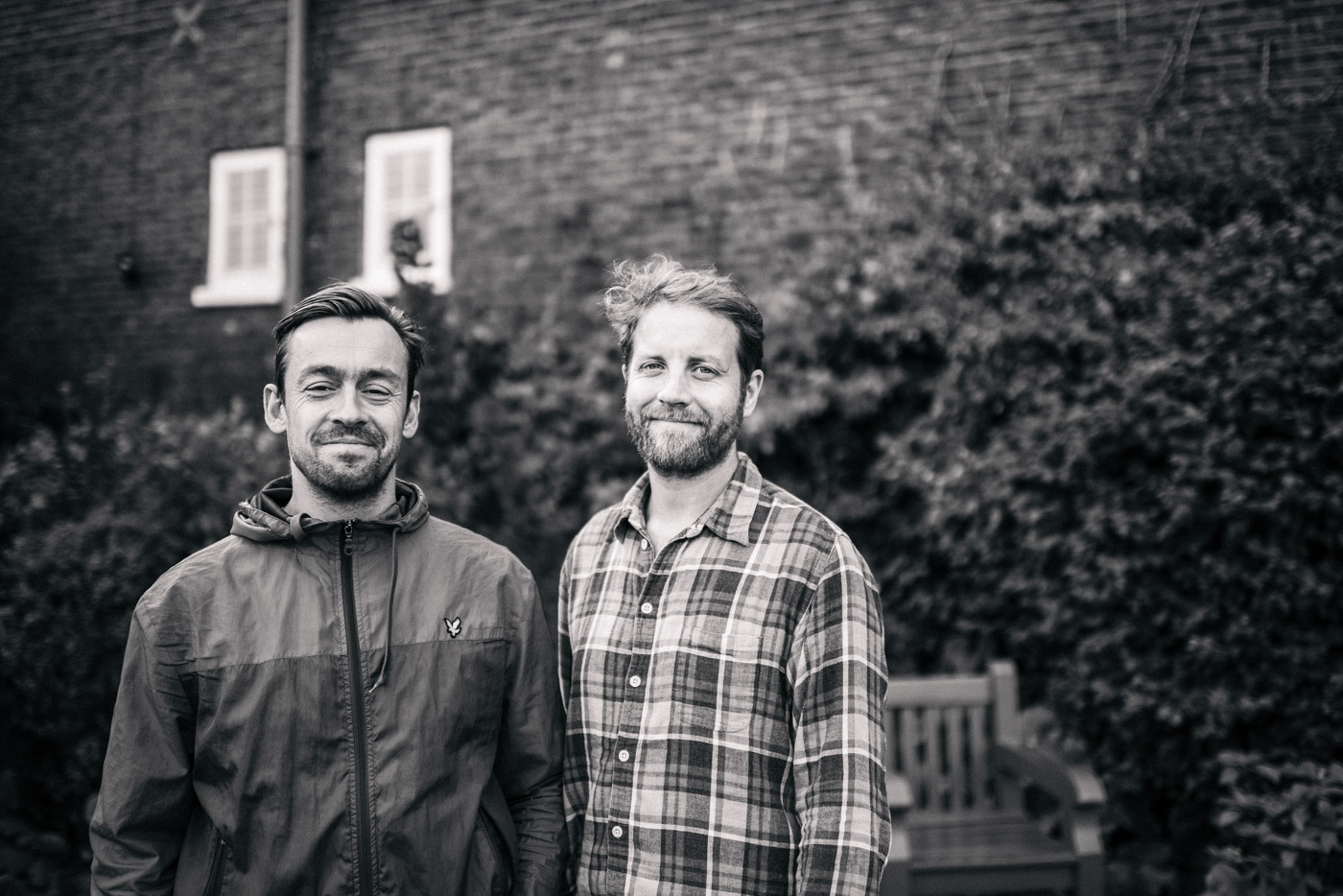
The company launched in 2012, just a few years after the “colony collapse disorder” hit the headlines. Books like Alison Benjamin’s A World Without Bees explore the dwindling population of honey bees across the globe. A third of what we eat, Benjamin explains, relies on pollination, and bees are dying out at a devastating rate due to a host of factors including chemical agriculture and climate change. Of course, Barnes & Webb’s small clutch of hives are not poised to end this decline, but their urban hives have captured people’s imaginations. They are drumming up an excitement not only in homegrown honey and the pleasures of the outdoors, but in the fragility of beekeeping as a practice.
“There’s certainly more awareness of the need to keep bees now,” Webb explains. “But we didn’t start this as a charity or to raise awareness. It’s always difficult to say how much impact you’re making. There are so many factors involved in the problems with bees that are way beyond our remit.” Barnes steps back from the hives and joins us. “Giving someone an appreciation of bees naturally makes the issues more important to them, which can only be a good thing,” he says. “If people are educated about the significance of bees, then they’re more likely to take note about the issues.”
And yet, raising awareness of the bee crisis, let alone becoming honey producers, was never Barnes’ or Webb’s intention. For them, the simple art of beekeeping was always enough. It is a passion that seems far removed from the jumbled din of central London, yet somehow it feels right at home. “The honey is just a byproduct,” Webb says, sending a ribbon of smoke into the air from a can, designed to calm the bees while they are tended to. “We only recognized it as an opportunity when people started clambering over each other to get the honey. It is strange to suddenly be classed as honey-makers. Truthfully, we did this to be beekeepers. And to share the love of bees. That is what it will always be for us.”





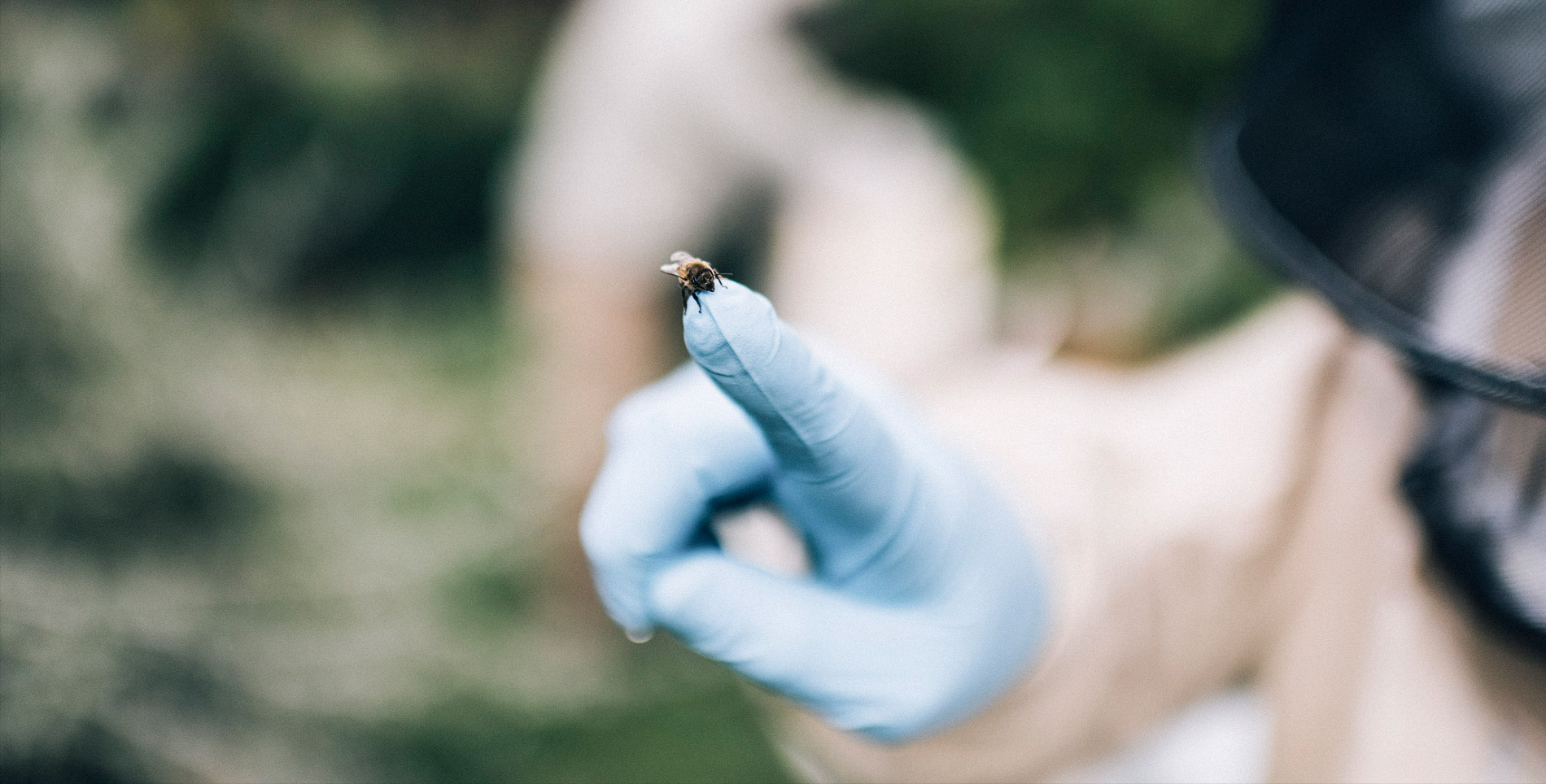

Our comments section is for members only.
Join today to gain exclusive access.